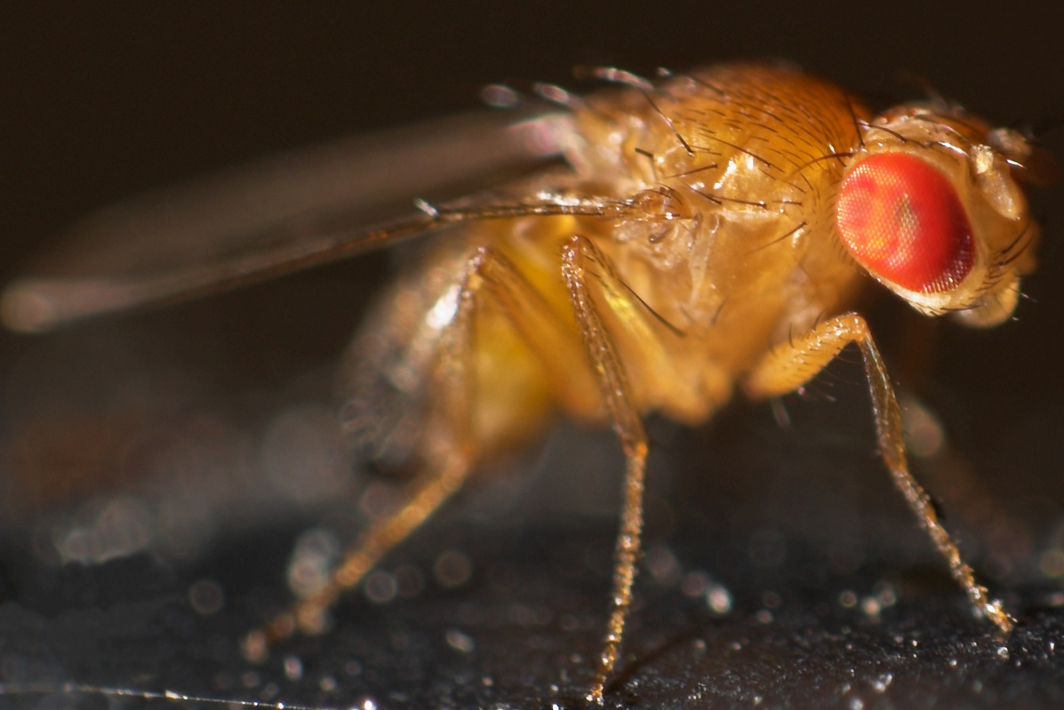How to control fruit flies by putting designer drugs in their food
September 9, 2013

Drosophila melanogaster aka fruit fly (credit: Mr.checker/ Wikimedia Commons)
So scientists at LSU Health Sciences Center in New Orleans have figured out how to control fruit-fly behavior and physiology by spiking their food with a designer drug called (we’re not making this up) DREADD (Designer Receptors Exclusively Activated by Designer Drugs).
The idea is to give them Alzheimer’s, Parkinson’s, cancer, obesity, diabetes, heart disease, epilepsy, ALS, and mental illness.
That’s all we need, crazed obese flies engorging themselves on our lunch. Waiter, there’s an epileptic fly in my soup!
And here’s the Alex Jones-worthy part: DREADD was first developed for mammalian systems. That would be us. Have you seen the movie “The Fly”? ‘Nuff said.
Anyway, the scientists say they can control sensory perception, learning and memory — and even courtship — is there nothing sacred?
They can also control certain enzymes in almost every tissue type to probe mechanisms of basic cellular function. The researchers demonstrated this ability by stopping the fly heart with activation of the inhibiting DREADD expressed in the heart, and then restarting the heart simply by washing away the drug. Wow, “Flatliners” for flies?
Why are they doing all this? “A better understanding of fly behaviors will translate to a better understanding of human biology and diseases,” the researchers say.
It’s also an alternative to using optogenetics to switch neurons on an off, which requires complicated light sources and fiber optics and has narrow dose-response
control and and sensitization issues. The blue light also has poor penetration into whole organisms, the researchers say.
OK, in that case, it’s all good. Never mind, Alex.
Researchers from the University of Kentucky and the University of North Carolina Medical School were also involved in the research, which was supported by a grant from the National Institutes of Health.
The Cell Reports paper, cleverly named “DREADDs in Drosophila,” is open-access.